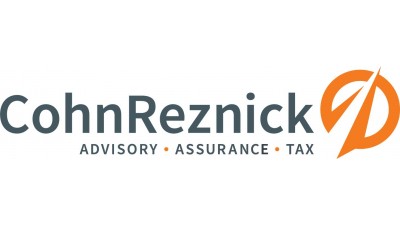U.S. Office Market Enters Slower, Stable Period Of Growth

The rush for office space in one of the longest periods of economic recovery in U.S. history has hit its stride. As unemployment drops below 4% for the first time since 2000, and as talent shortages rise across industries from technology to finance, the office market has hit its slowest expansionary cycle since 2010. Net absorption nationally was 3.7M SF in Q1, JLL reported.
Houston, Silicon Valley and New Jersey led the slowdown, with each market seeing 1M SF of negative absorption in Q1, fueled respectively by the energy price collapse, tech-sector consolidation and continued movement to Class-A property in core markets. In New York City, where vacancy rates are expected to move upward from 8.5% as large-block availabilities at existing buildings come online and as more than 15M SF of office space remains under construction, CohnReznick partner Ronald Kaplan sees a healthy market, albeit one with rising concessions and increased competition between office owners.
“It’s an interesting time, because it is hard to assess where the market is heading,” Kaplan said. “It’s become more of a tenant’s market, so if you are in the market for office space, it is not a bad time.”
In NYC, Kaplan continues to see demand for longtime hubs of office leasing activity among tech companies and other industries, like Midtown East, Flatiron and Downtown Manhattan. In all three submarkets, several high-profile office properties will become available in the coming months. Downtown, 3 World Trade Center opened Monday, bringing a towering office development to the finance district-turned-tech hub. JPMorgan Chase will also tear down and rebuild its headquarters at 270 Park Ave., expanding the building’s footprint by 1M SF.
Major tech firms continue to occupy more bespoke locations throughout the city. Google’s acquisition of Chelsea Market for $2.4B made waves earlier this year as the second-most-expensive office purchase in the history of New York City while Facebook continues to grow its footprint in Midtown South, expanding its presence at its 770 Broadway HQ.
“You have a lot of space coming online, much of which is pre-leased,” Kaplan said. “There’s also the WeWorks of the world, providing a solution for many companies that are looking for smaller-sized space.”
The growing availability of space and tight labor conditions have made owners more open to upgrading offices to remain competitive. Concession packages in New York have reached $92/SF, according to JLL. It is a trend that reflects the national office landscape, where concessions packages rose by 3.5% during Q1 and now exceed $75/SF in many primary markets.

Tenants, looking to recruit young professionals in gateway markets, have put increased pressure on owners to provide greater concession packages and continue to opt for space in denser, more walkable urban markets. The resulting preferences led to a decrease of 20 basis points, to 11.9%, in central business district office vacancies while suburban Class-A vacancy rose by 20 bps to 16.6% nationally.
“The problem with the suburbs is that no one new is moving there,” Kaplan said. “So you have many vacancies in the suburban offices, and that is a big problem. You are going to see certain properties that have been vacant have a change in use, becoming housing, hotel or senior housing.”
Buoyed by the change in workplace preferences, office construction is underway across the country. Construction exceeded 100M SF during Q1 nationally, largely influenced by the Old Main Post Office renovation in Chicago. Activity remains concentrated in primary markets like New York, Washington, D.C., and Chicago. Demand continues to rise, leading to steady rent growth. Direct asking rents showed an average 1.6% increase to $33.78/SF, JLL reported.
Demand, particularly from tech, advertising, media and information tenants, should allow absorption to recover to a degree, but it will remain below previous years. If occupancy growth continues at its current rate, 2018 office absorption will be 59% slower than in 2017, JLL reported. Despite the slowdown, the office market continues to expand.
This feature was produced in collaboration between Bisnow Branded Content and CohnReznick. Bisnow news staff was not involved in the production of this content.

